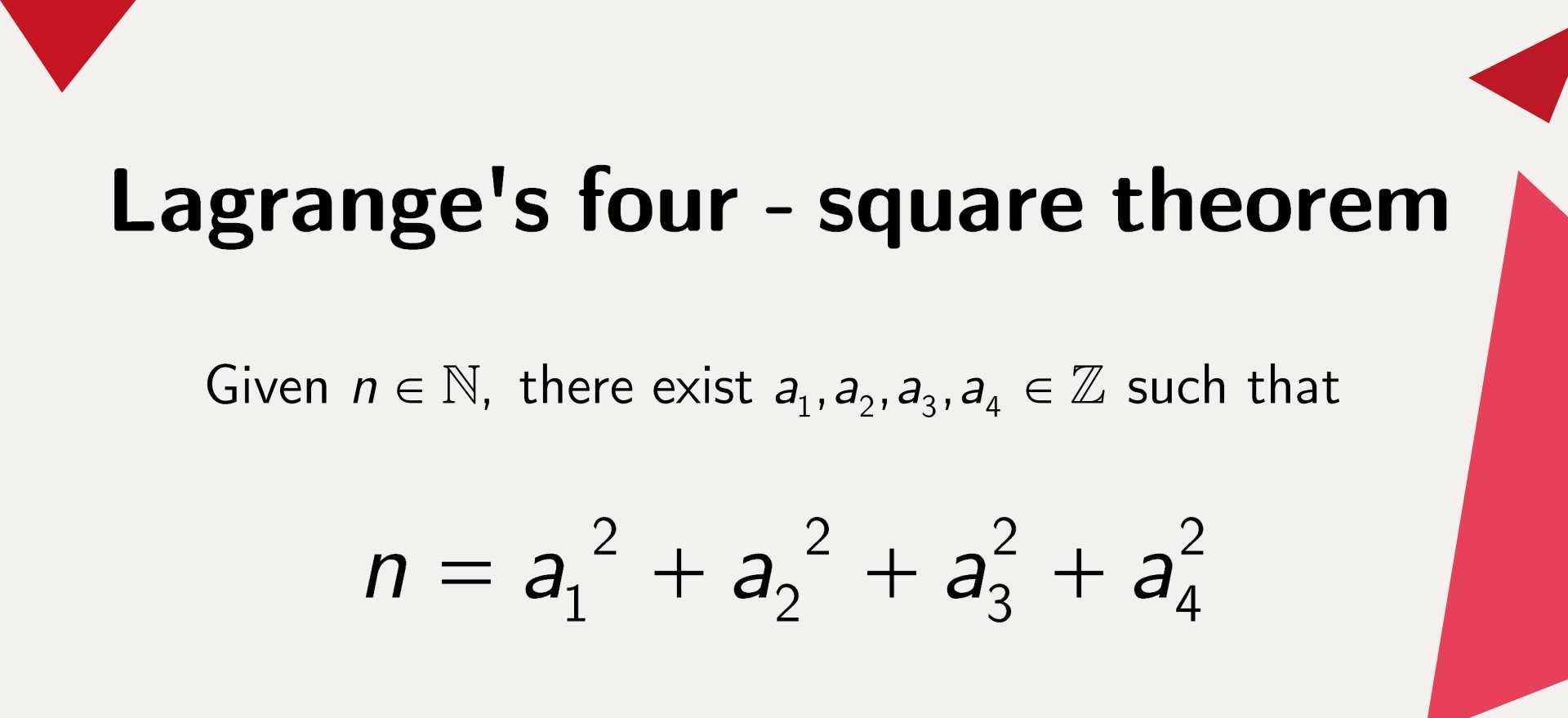
Lagrange's Four Square Theorem is a fascinating concept that has intrigued mathematicians and enthusiasts for centuries. This theorem, formulated by the legendary mathematician Joseph-Louis Lagrange, delves into the realm of number theory and offers profound insights into the nature of numbers. Understanding this theorem not only sheds light on the properties of integers but also unveils the intricate beauty of mathematical patterns.
In this article, we will explore 12 intriguing facts about Lagrange's Four Square Theorem, unraveling its significance and implications. From its historical origins to its modern-day applications, we will delve into the depths of this theorem, shedding light on its mathematical elegance and practical relevance. Whether you're a mathematics aficionado or simply curious about the mysteries of numbers, this exploration of Lagrange's Four Square Theorem promises to be an enlightening journey into the captivating world of mathematical theory. So, let's embark on this mathematical odyssey and uncover the secrets of Lagrange's Four Square Theorem.
Key Takeaways:
- Lagrange’s Four Square Theorem states that every natural number can be expressed as the sum of four integer squares, impacting fields like cryptography and inspiring ongoing mathematical exploration.
- This theorem’s elegance and profound implications for understanding natural numbers have solidified its place as a cornerstone of mathematical knowledge, inspiring ongoing research and exploration in the field of number theory.
Lagrange's Four Square Theorem is a mathematical theorem that states that every natural number can be represented as the sum of four integer squares.
First formulated by mathematician Joseph-Louis Lagrange in 1770, this theorem has fascinated mathematicians and number theorists for centuries.
The theorem is also known as Bachet's Conjecture, as it was initially proposed by Pierre de Fermat in 1637 and later proven by Lagrange.
This historical connection adds an intriguing layer to the theorem's significance in the field of mathematics.
Lagrange's Four Square Theorem is a fundamental result in number theory, providing a profound understanding of the properties of natural numbers.
Its impact extends to various mathematical disciplines, making it a cornerstone of mathematical knowledge.
The theorem implies that every positive integer can be expressed as the sum of at most four perfect squares.
This insight has profound implications for the study of number theory and has inspired numerous related investigations.
Lagrange's Four Square Theorem has practical applications in cryptography and computer science.
Its relevance in modern technological fields underscores the enduring significance of this mathematical principle.
The theorem's proof involves intricate mathematical reasoning and techniques, showcasing the depth of mathematical analysis required to establish such fundamental results.
This complexity highlights the intellectual rigor and depth of mathematical exploration involved in proving the theorem.
Lagrange's Four Square Theorem has connections to modular forms and the theory of elliptic curves, enriching its relevance in advanced mathematical research.
These connections underscore the theorem's far-reaching influence in diverse mathematical domains.
The theorem's elegance lies in its ability to provide a systematic and comprehensive framework for understanding the structure of natural numbers.
This elegance has captivated mathematicians and scholars, contributing to its enduring legacy in mathematical literature.
Lagrange's Four Square Theorem has inspired further investigations into related mathematical problems, fostering ongoing exploration and discovery in the field of number theory.
This enduring impact underscores the theorem's role as a catalyst for mathematical inquiry and innovation.
The theorem's significance transcends its historical origins, resonating with contemporary mathematicians and scholars who continue to explore its implications and applications.
This enduring relevance underscores the theorem's enduring legacy in the mathematical community.
Lagrange's Four Square Theorem represents a testament to the power of mathematical reasoning and the profound insights that emerge from the study of number theory.
Its enduring significance serves as a testament to the enduring impact of mathematical exploration and discovery.
The theorem's profound implications for the study of natural numbers have solidified its place as a cornerstone of mathematical knowledge, inspiring ongoing research and exploration in the field of number theory.
This enduring legacy underscores the theorem's enduring relevance and significance in the mathematical community.
Conclusion
In conclusion, Lagrange's Four Square Theorem stands as a remarkable testament to the elegance and power of mathematical reasoning. Through the theorem, Joseph-Louis Lagrange unveiled a profound connection between number theory and the realm of squares, shedding light on the intrinsic nature of integers. This enduring theorem continues to inspire mathematicians and enthusiasts alike, serving as a testament to the enduring legacy of mathematical inquiry and discovery.
FAQs
What is Lagrange's Four Square Theorem?Lagrange's Four Square Theorem, proposed by Joseph-Louis Lagrange, asserts that every natural number can be expressed as the sum of four perfect squares. This fundamental theorem has far-reaching implications in number theory and has captivated mathematicians for centuries.
How does Lagrange's Four Square Theorem impact mathematics?Lagrange's Four Square Theorem has significantly influenced the field of number theory, providing valuable insights into the properties of integers and the nature of perfect squares. Its implications extend to diverse areas of mathematics, showcasing the profound interconnectedness of mathematical concepts.
Was this page helpful?
Our commitment to delivering trustworthy and engaging content is at the heart of what we do. Each fact on our site is contributed by real users like you, bringing a wealth of diverse insights and information. To ensure the highest standards of accuracy and reliability, our dedicated editors meticulously review each submission. This process guarantees that the facts we share are not only fascinating but also credible. Trust in our commitment to quality and authenticity as you explore and learn with us.
